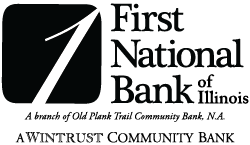How To Evaluate Travel Costs To Determine Your Vacation Destination
How To Evaluate Travel Costs To Determine Your Vacation Destination
The first step in planning a dream trip? Figuring out where you’ll go. To decide where to go, while getting the best bang for your budget, it’s helpful to evaluate travel costs before choosing a destination.
Envisioning a swim-up bar? You might investigate an all-inclusive. Want to go hiking somewhere with a breathtaking view? Then it’s time to think about the costs involved in climbing to that altitude. Choosing your priorities and creating a mock itinerary is one way to brainstorm the type of vacation you want to take.
The rest of this article will give an overview of these points as well as thoughts on local costs and exchange rates. Whether it’s basking in the sun or exploring a new city, you can have a great vacation without breaking the bank.
Choose your priorities
What do you want your budget to be going toward during your trip? Some travelers prioritize fine dining, whereas others want to focus on entertainment and recreation. Having a sense of your priorities on a trip can help direct the destination.
If you know you’d like to prioritize one area of your trip, compare costs in that particular category. You don’t want to get to a country with the aim of enjoying its food and then find out that local costs for food are outside of your budget, for instance.
Know the biggest cost factors
It's worth taking note of a few specific factors that may influence the overall cost of your trip more than others.
First, the popularity of your destination can significantly affect your costs. If you want to travel to a big city or a tourism hotspot, you should expect to pay more than you would traveling to a smaller city or a more remote destination, regardless of when you’re planning to visit.
Additionally, seasonality is a consideration; traveling at peak times means paying a premium on a hotel room, car rental, food, and entertainment. And in certain destinations, high-season costs can be significantly higher.
You also can't forget to factor in the cost of transportation itself. Currently, as prices rise across the board, many modes of travel are becoming more expensive. For instance, the price of gas and plane tickets are rising. It's important to be aware of these cost increases, so you can narrow your destination list based on the kind of transportation you can afford.
Create a mock itinerary
When you’re down to a few destinations, creating a mock itinerary to see what a typical day might cost can be helpful, since local prices play a major role in the affordability of your vacation.
First, write down a few things you’d plan to do on an average day, and look up costs for each destination. Total all the individual costs to get a sense of what you might expect to pay in a given day, and see how the numbers stack up against each other.
During this exercise, make sure you’re comparing all mock budgets in U.S. currency, even if your potential destination is abroad. For example, if one of the destinations you’re looking at uses euros as local currency, be sure to convert these costs to U.S. dollars, to compare apples to apples.
This doesn’t mean you have to pick the lowest-cost destination, of course. Rather, this exercise will help you see the true cost of a location and whether you can afford one destination over another.
Once you have a sense of average costs for a few potential destinations, you can compare the differences among them, and ultimately decide which destination is best suited to your budget.
Look into exchange rates
If you’re hoping to travel internationally, you’ll want to evaluate exchange rates between the U.S. dollar and the local currency.
When the exchange rate is high, the dollar’s value is worth less than the currency of your destination. This could result in higher expenses for everything from where you stay to what you eat. On the flip side, international vacations to countries with low currency exchange rates can help you stretch your money further, since the cost of things like lodging, food, and recreation will be lower.
Budget-conscious travelers should consider holding off on trips to countries with high exchange rates. Since currency values fluctuate, waiting until a country’s currency is closer in value to the U.S. dollar can make sense if you are willing and able to wait. You can also keep your travel domestic if you decide you want to avoid expensive exchange rates.
Stay open-minded
All-inclusive options could be a good arrangement for some travelers. They include multiple essentials, generally packaging lodging, meals, and entertainment together. In some cases, travel is even included. Although you’ll have less flexibility than you would if you booked each element on its own, all-inclusive options can take some of the stress off your budget (not to mention logistics, too).
Luckily, all-inclusive options are available for both domestic and international travel, so you can still explore all types of destinations if you’d like to go the all-inclusive route.
Having the best trip is not only about choosing the perfect destination but also about making sure you’ll be able to afford everything you want to experience while you are there. A little bit of advance legwork may be needed to investigate travel costs when deciding where to visit, but it’s often worth it.





